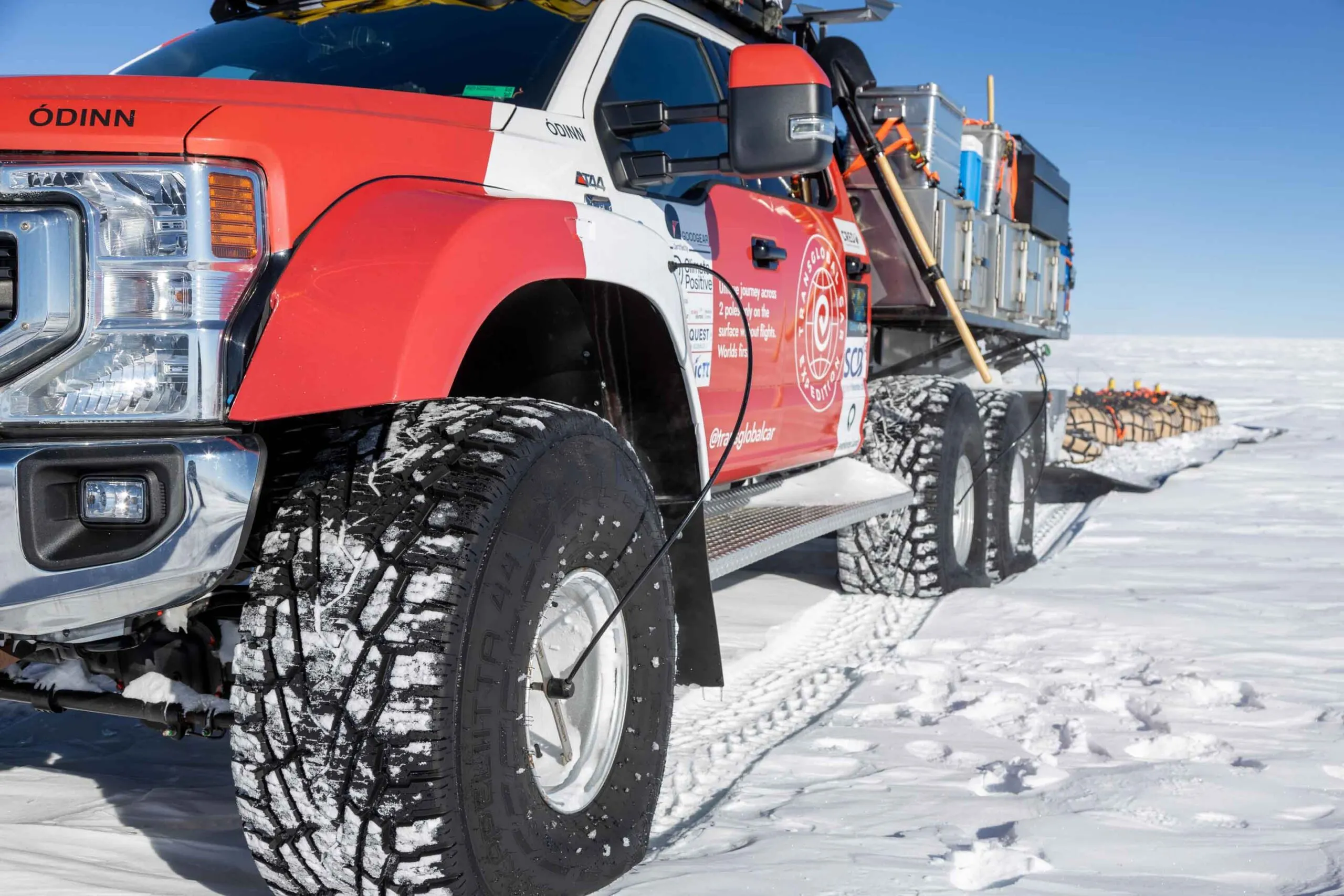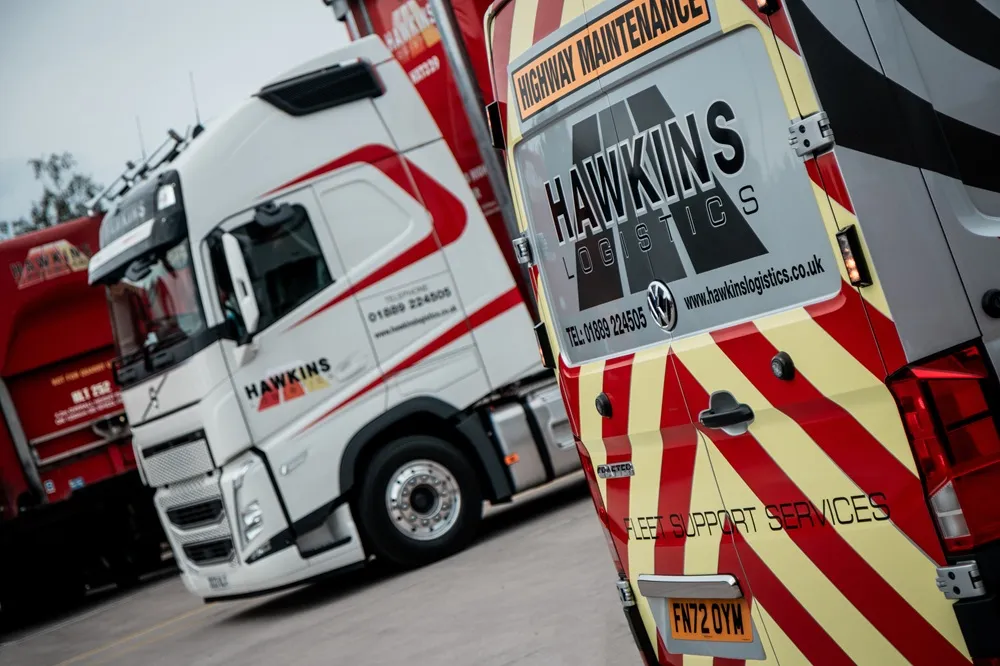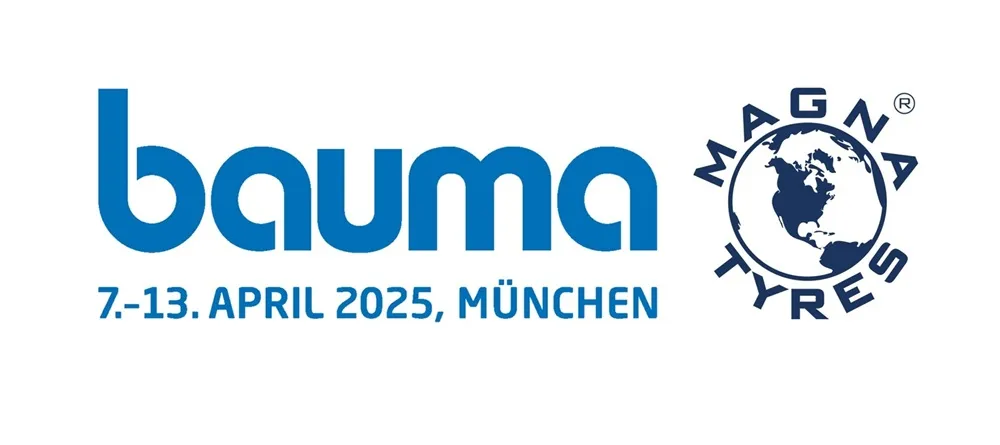Arctic Trucks and Nokian Tyres have collaborated for several years. In 2017, Nokian Tyres produced the custom-designed Hakkapeliitta 44—a tyre with a diameter of over a meter, created specifically in collaboration with Arctic Trucks.
The Expedition
“With enormous distances between fuel or support, we need our highly specialised vehicles where the tyres play a central role. We are super happy about our cooperation with Nokian on the Hakkapeliitta 44-inch tyre, which gives us a big advantage over what we used previously and other tyres available in this category. Not only is it superior in soft snow conditions but also increasing our fuel efficiency by 15-20% on average, a super important factor for what we can offer and costs,” says Emil Grimsson, expedition leader for the Antarctica crossing.
The Transglobal Car Expedition was the team’s first test of using the newly developed AT44 Ford F350 6×6 in Antarctica, which they tested in the Arctic, including taking the Transglobal team from Edmonton to the Arctic town of Cambridge Bay.
The original plan was for the Transglobal Car Expedition team to exit Antarctica via Marguriete Bay and the vehicles to return to Union Glacier to be stored for the winter just in time before the last flight out in the season. Due to heavy ice conditions and an extra stop of the icebreaker, the team arrived at Larsemann Hills nine days behind schedule making their original plan an extreme challenge, but they still decided to give it a try.
After several challenges such as acclimatisation, low oxygen levels and car breakdowns, the team of 10 people arrived at the South Pole on January 5. On January 7, the team continued driving to Union Glacier and arrived there on January 10 after having completed over 300km in the whiteout. On January 13, the weather was better and the team drove to Constellation Inlet and celebrated the completion of crossing Antarctica coast to coast.
The Transglobal Car Expedition now continues driving north along South America with the plan to end the expedition around the world in New York in April. This expedition started on January 10, 2024, and made it to the North Pole in April. Led by Mr. Vasily Shakhnovskiy, this overall project around the world is an enormous challenge.
Collaboration Between Arctic Trucks and Nokian Tyres
Collaboration between Arctic Trucks and Nokian Tyres goes back to 2017 and the production of custom-designed Nokian Tyres Hakkapeliitta 44 – a tyre with a diameter of over a meter, created specifically in collaboration with Arctic Trucks.
“Despite its significant size, the tyre moves through deep snow with ease,” says Kalle Kaivonen, R&D director at Nokian Tyres. “We are thankful to Arctic Trucks for throwing us this extreme challenge. The width of the tread as well as the tyre’s maximal airspace guarantee that snow poses no challenge to the Hakkapeliitta 44!”
The real-life tests in the Arctic and Antarctic conditions confirm Hakkapeliitta 44’s suitability for extreme conditions. Grímsson explained the Hilux 6×6 had no issues with the snow conditions when equipped with the Nokian Tyres Hakkapeliitta 44, with fuel consumption reduced by 15-25%.
The trouble caused by soft snow could be managed by regulating tyre pressures. “With internal tyre inflation, we could temporarily take the tyre pressure down to 3.5 psi to get going in very soft snow conditions. Then we used the huge torque of the 6.7-litre engine to build up speed,” Grímsson describes. “Then we could increase the tyre pressure again to 5–6 psi and cruise like a boat at 50 to 80 km/h. This is a feature which the Nokian Hakkapeliitta 44 tyre is especially good at delivering.”
The Extreme Challenges
During their Antarctica crossing, the Transglobal Car Expedition team faced some extreme conditions. The low oxygen levels at high elevations caused headaches and feeling out of breath. “The route takes you quickly to over 3,500 meters and reaches up to 3,650 meters,” Grímsson says. “The oxygen level in the polar regions is much lower than around the centre, so what we experienced was comparatively close to 4,500 meters!”
Another extreme feature is the sastrugi ice ridges – ice formations stretching hundreds of kilometres that put vehicles and tyres to the test by shaking them mercilessly. During this expedition, crossing the sastrugi areas caused real concern about how the plastic sledges carrying vital supplies would withstand the constant abrasion, vibration, impacts and extreme sub-zero temperatures.
Despite the hostile environment, the expedition made its 4,141 km journey and is currently on the sixth leg, driving through South America and finally back to its original starting point, New York.








